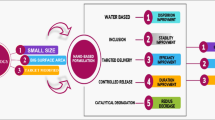Abstract
Pyrethroid and indoxacarb are commonly used pesticides to control the fall armyworm (Spodoptera frugiperda) in the crops. There are a series of consequences caused by the use of pyrethroid and indoxacarb pesticides under emergency control, such as pest resistance development, contamination of soil, water, and farm products. This study analyzed the structure and physiological function of the sodium channel in S. frugiperda, which is an important step to elaborate the resistance mechanism of S. frugiperda to indoxacarb and pyrethroid pesticides. According to genetic analysis, the cloned cDNA sequences of sodium channel in S. frugiperda (SfNav) showed the shortest genetic distance with that of the sodium channel in Helicoverpa armigera. Under the induction of three pesticides, the expression of SfNav decreased in the first 12 h and then increased after 24 h. It was concluded that SfNav had a typical structure of the sodium channel of insects and its down-regulated expression can decrease the combination of S. frugiperda with pyrethroid and indoxacarb pesticides. The up-regulated expression of SfNav was conducive to the enhancement of the pesticide resistance.




Similar content being viewed by others
Change history
20 February 2021
A Correction to this paper has been published: https://doi.org/10.1007/s00128-021-03140-8
References
Carvalho RA, Omoto C, Field LM, Williamson MS, Bass C (2013) Investigating the molecular mechanisms of organophosphate and pyrethroid resistance in the Spodoptera frugiperda. PLoS ONE 8:e62268
Davies TGE, Field LM, Usherwood PNR, Williamson MS (2007) DDT, pyrethrins, pyrethroids and insect sodium channels. IUBMB Life 59:151–162
Dong K (2007) Insect sodium channels and insecticide resistance. Invert Neurosci 7:17–30
Dong K, Du Y, Rinkevich F, Nomura Y, Xu P, Wang L, Zhorov BS (2014) Molecular biology of insect sodium channels and pyrethroid resistance. Insect Biochem Mol Biol 50:1–17
Gutiérrez-Moreno R, Mota-Sanchez D, Blanco CA, Whalon ME, Terán-Santofimio H, Rodriguez-Maciel JC, DiFonzo C (2019) Field-Evolved resistance of the fall armyworm (Lepidoptera: Noctuidae) to synthetic insecticides in Puerto Rico and Mexico. J Econ Entomol 112:792–802
Jiang YJ, Liu J, Zhu XM (2019) An analysis of the occurrence dynamics and future trend of the invasion of Spodoptera frugiperda in China. China Plant Protection Guide 39:33–35 (in Chinese)
Jones CM, Liyanapathirana M, Agossa FR, Weetman D, Ranson H, Donnelly MJ, Wilding CS (2012) Footprints of positive selection associated with a mutation (N1575Y) in the voltage-gated sodium channel of Anopheles gambiae. Proc Natl Acad Sci USA 109:6614–6619
Loughney K, Kreber R, Ganetzky B (1989) Molecular analysis of the para locus, a sodium channel gene in. Drosophila Cell 58:1143–1154
Montezano DG, Specht A, Sosa-Gomez DR, Roque-Specht VF, Sousa-Silva JC, Paula-Moraes SV, Peterson JA, Hunt TE (2018) Host plants of Spodoptera frugiperda (Lepidoptera: Noctuidae) in the Americas. African Entomol 26:286–300
Morillo F, Notz A (2001) Resistance of Spodoptera frugiperda (Smith) (Lepidoptera: Noctuidae) to lambda-cyhalothrin and methomyl. Entomotropica 16:79–87
Rinkevich FD, Du Y, Dong K (2013) Diversity and convergence of sodium channel mutations involved in resistance to pyrethroids. Pestic Biochem Physiol 106:93–100
Shylesha AN, Jalali SK, Gupta A, Varshney R, Venkatesan T, Shetty P, Ojha R, Ganiger PC, Navik O, Subaharan K, Bakthavatsalam N, Ballal CR, Raghavendra A (2018) Studies on new invasive pest Spodoptera frugiperda (Smith) (Lepidoptera: Noctuidae) and its natural enemies. J Biol Control 32:145–151
Silver KS, Song WZ, Nomura Y, Salgado VL, Dong K (2010) Mechanism of action of sodium channel blocker insecticides (SCBIs) on insect sodium channels. Pestic Biochem Physiol 97:87–92
Smith LB, Kasai S, Scott JG (2018) Voltage-sensitive sodium channel mutations S989P + V1016G in Aedes aegypti confer variable resistance to pyrethroids, DDT and oxadiazines. Pest Manag Sci 74:737–745
Teixeira LA, Andaloro JT (2013) Diamide insecticides: global efforts to address insect resistance stewardship challenges. Pestic Biochem Physiol 106:76–78
Wu YD, Shen HW, Zhang Z, Wang XL, Shi Y, Wu SW, Yang YY (2019) Overview of drug resistance and its control strategies of the Spodoptera frugiperda. Chinese Journal of Applied Entomology 59:599–604 (in Chinese)
Wu SY, Nomura Y, Du YZ, Zhorov BS, Dong K (2017) Molecular basis of selective resistance of the bumblebee BiNav1 sodium channel to tau-fluvalinate. Proc Natl Acad Sci U S A 114:12922–12927
Yu RX, Zhao XP, Wu SX, Wu SG, Cang T, Chen LP, Wang Q (2009) Safety evaluation of indene on environmental organisms. Pesticide 48:47–49. (in Chinese)
Zhang K, Chen ML, Wang H, Duan WB, Wang Q, Li F, Deng DH, Elizabeth Bandason WuSY (2020) Molecular characterization and functional expression of voltage-gated sodium channel variants in Apolygus lucorum (Meyer-Dür). Pest Manag Sci. https://doi.org/10.1002/ps.5748
Acknowledgements
This study was financially supported by China National Natural Science Foundation (NSFC31960539, NSFC31901894) and Hainan University (KYQD (ZR) 1963, KYQD (ZR) 1951), Monitoring and control of major invasive organisms in Hainan Province (1630042020020).
Author information
Authors and Affiliations
Corresponding authors
Additional information
Publisher's Note
Springer Nature remains neutral with regard to jurisdictional claims in published maps and institutional affiliations.
Rights and permissions
About this article
Cite this article
Wang, LK., Li, F., Jiang, W. et al. A Preliminary Toxicology Study on Eco-friendly Control Target of Spodoptera frugiperda. Bull Environ Contam Toxicol 106, 295–301 (2021). https://doi.org/10.1007/s00128-020-03044-z
Received:
Accepted:
Published:
Issue Date:
DOI: https://doi.org/10.1007/s00128-020-03044-z




